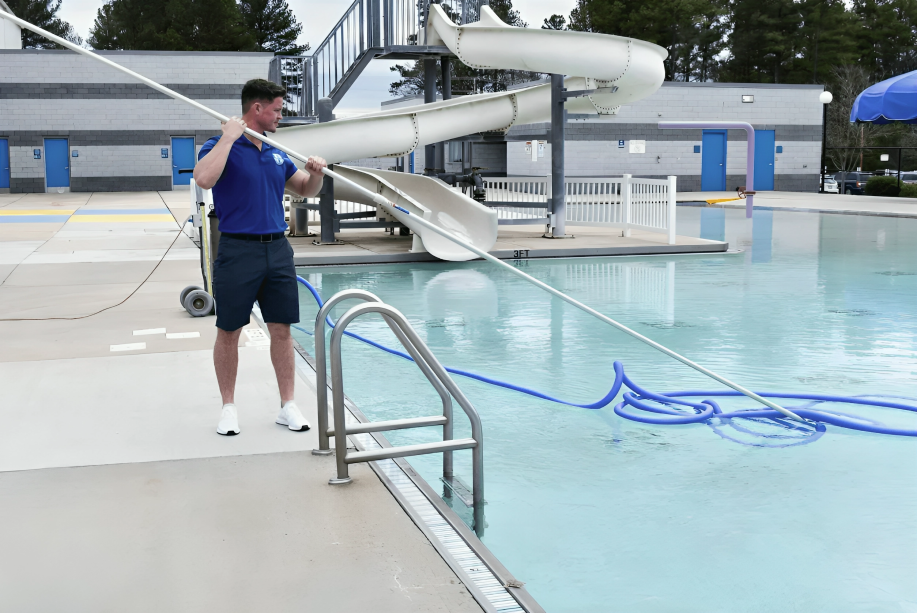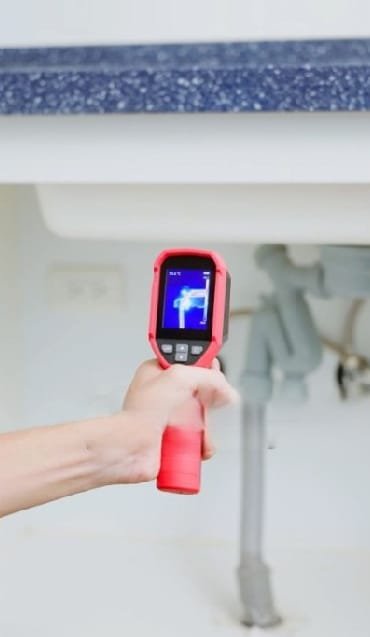Intorduction:
Having a swimming pool in one’s compound is not only enjoyable, but it also presents significant challenges, particularly when it leaks. Diagnosing and rectifying swimming pool leaks is a crucial part of pool management, as excessive water loss can negatively impact the water content and lead to costly water losses in the building structure. Below are simple step-by-step instructions on how to identify leaks and make repairs. Pool leak detection offerings perceive and find leaks to your pool machine to save you water loss, reduce expenses, and preserve greatest pool function.
Signs of a Swimming Pool Leak
Identifying Common Symptoms
Pool leaks can be subtle, but these signs can help:
Falling Water Levels: If your pool loses an inch or more of water per day, you may have a leak in your pool.
Wet Spots Around the Pool: A leak may be the cause of wet spots or water patches on the pool deck.
Increased Water Bills: This is especially true if you observe that your water bill has shot up significantly but you are wrestling with the same usage.
Cracks or Gaps: Hole in the pool shell or crack in the grout can allow escapes of water out of the pool.
DIY leak detection methods

Step 1: Perform the Bucket Test
Fill a Bucket with Pool Water: Transfer water into a bucket and place it on the pool step, ensuring the water level matches that of the pool.
Mark Water Levels: From this point, I use a piece of tape to indicate the water level in both the bucket and the pool.
Observe Water Levels After 24 Hours: Whenever the amount of water in the pool falls below that in the bucket by a distance greater than the quantity in the bucket itself, then the leakage has been identified.
Step 2: Cleaning equipment and fixtures for the pool
Leaks can sometimes occur in pool equipment or plumbing systems.
Pump and Filter: Look at the sides of the pool for signs of drips or puddling near the pump and filter.
Return and Skimmer Lines: Another important step is to check for air bubbles that originate from the return jets, as they may indicate water leakage.
Step 3: Utilization of food dye for exact identification
Major things that can be done include adding food coloring around the areas that have been deemed to have leaks. The color will always gravitate toward certain areas, indicating the likely location of the leak.
This article will seek to explain how to best repair some of the leading sources of swimming pool leaks.
Patch Leaks in the Pool Liner
If a liner is torn:
Drain and Clean the Area: In the case of one small leak, clean the leak area and then apply the pool patch kit.
Use Adhesive: Instead, apply waterproof adhesive to the patch before placing it over the leaking part.
Allow to Dry: This has to be cured before you start refilling your pool again.
Fix breaks in the concrete swimming pool.
For concrete pools:
Drain to the Leak Area: Throw away the water that continues to drip through the leak.
Apply Epoxy or Sealant: Clean and seal the crack with the pool-grade epoxy or polyurethane sealant.
How to prevent future leaks
Regular Pool Maintenance
Routine Inspections: This should involve a routine inspection of the pool shell, plumbing, and equipment.
Chemical Balance: Maintain a diabetic pH level in your pool to minimize liner wear and tear.
Seasonal Checkups: In this area, it’s crucial to make sure there are no leaks or potential cracks, particularly during the start and end of the season.
Professional Pool Leak Detection Services
For a relatively major problem or one that you cannot locate, it will be helpful to hire a professional. Sophisticated instruments, such as pressure tests and ultrasonic apparatus, detect very restricted knowledge leaks.
Prevents Structural Damage: Constant water leakages will affect the structure of your pools and the surroundings landscape.
Saves Water and Money: Personal control helps provide protection from leaks, while the usage of water is more effective, not wasteful, and less costly.
Promoting health and safety, clean swimming pools discourage mold-forming activities and other water-related health risks.
Conclusion
Therefore, it’s crucial to seek services for identifying swimming pool leaks, enabling prompt necessary repairs to prevent the pool from deteriorating further. The beauty of maintaining your pool is that it either involves following DIY practices or seeking the services of a professional person; it will enhance the durability of your pool and keep it in its best shape.
To learn more about pool maintenance, go to our home page on Water Leak Detect to find out more about the latest developments in leak detection.



